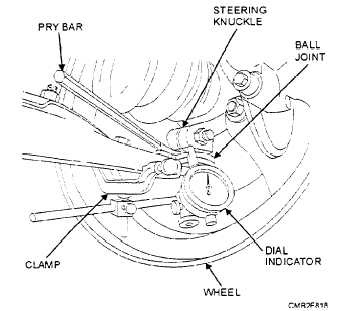
Figure 8-18. - A dial indicator mounted to measure the amount of play in a ball joint.
ball joint. The ball joint may be pressed, riveted, bolted, or screwed into the control arm. If the ball joint is riveted to the control arm, replace the rivets with bolts.
NOTE
For exact ball joint removal and installation procedures, consult the manufacturer's service manual.
Shock Absorber Service
Worn shock absorbers will cause the vehicle to ride poorly on rough roads. When the tire strikes a bump, a bad shock will not dampen spring oscillations. The suspension system will continue to rebound and bounce. This move is then transferred to the frame, the body, and the passenger compartment.
Loose or damaged shocks produce a loud clanking or banging sound. The rapid up-and-down movement of the suspension can hammer the loose shock absorber against the body, the shock tower, or the control arm.
To check shock absorber condition, locate any problems with a bounce test and a visual inspection. To perform a shock absorber bounce test, simply push up and down on each corner of the vehicle body. Then release the body and count the number of times the vehicle moves up and down. Generally a GOOD shock absorber should stop movement in two to three rebounds. A BAD shock absorber will let the body bounce over three times.
Visually inspect the shock absorbers for any signs of leakage (oily wetness) and damage. Also, check the bushing on each end of the shock for being smashed or split. Make sure that the shock absorber fasteners are tight. When shock absorber replacement is required, ALWAYS replace them as a pair, even if but one is defective. This action ensures the riding equilibrium of the vehicle.
NOTE
For instructions on removal and installation of shock absorbers, refer to the manufacturer's service manual.
CAUTION
With many suspension systems, you must place jack stands or lift devices under the control arms or axle when replacing the shock absorbers. This will keep the control arms or axle from flying downward when the shock is unbolted.
Strut Service
The most common trouble with a strut type suspension is worn shock absorbers. Just like conventional shock absorbers, the pistons and cylinders inside the struts can begin to leak. This reduces the dampening action and the vehicle rides poorly. As with the conventional shock absorber when a strut shock absorber leaks, it must be replaced, and ALWAYS as a pair.
Basically, strut removal involves unbolting the steering knuckle (front suspension) or bearing support (rear suspension), any brake lines, and the upper strut assembly-to-body fasteners. Remove the strut assembly (coil spring and shock) as a single unit.
CAUTION
Do NOT remove the nut on the end of the shock rod or the unit can fly apart.
A strut spring compressor is required to remove the coil spring from the strut. After the coil spring is compressed, remove the upper damper assembly. With the upper damper assembly removed, release the tension on the coil spring and lift the spring off the strut. Inspect all parts closely for damage.
Continue Reading